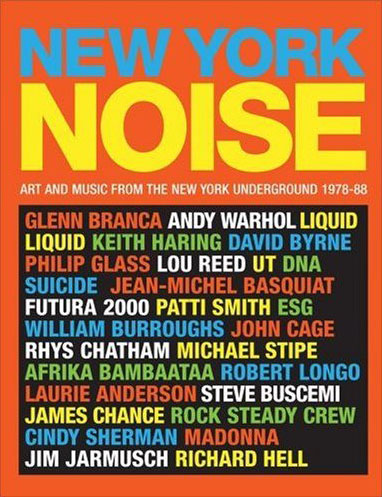Paula Court, the photographer for the New York performance space The Kitchen, has released New York Noise, a new book of photos from the city's underground art scene in the '70s and '80s. Included in the book are photos of everyone from Madonna and Michael Stipe to Philip Glass, Laurie Anderson, and David Byrne. Also in the book are short essays by some of the artists whose portraits are featured inside, including Anderson and Byrne. Read excerpts from their essays here.
Paula Court, the photographer for the famed New York performance space The Kitchen, has released New York Noise, a new book of photos from the city's underground art scene during the economically down-and-out but culturally vibrant years of the '70s and '80s. Included in the book are photos of everyone from Madonna and Michael Stipe to Philip Glass, Laurie Anderson, and David Byrne. Also in the book are short essays by some of the artists whose portraits are featured inside, including Anderson and Byrne.
The Times (London) has put together a photo gallery along with a few of the texts from the book. Below are excerpts from David Byrne's note:
New York was a scary and legendary place—and downtown was like a Bohemian living museum, which was pretty thrilling for an aspiring artist and musician.
Legends walked the streets—well, from a skewed boho POV. It was all very new and exciting, at least for me—and it was incredibly funky, the sleaze and poverty were everywhere ... The cheapest hookers in town were on Chrystie Street, where Talking Heads once shared a loft. Now there’s a Whole Foods and luxury condos on the corner.
I’m not complaining or nostalgic for the bad old days—some things are genuinely better ... What might have gotten lost was that one could incubate one’s work inside the supportive bubble of a close and sometimes desperate community. Now that period of incubation is incredibly short, the chicks are thrown out of the nest immediately ...
And Laurie Anderson had this to say:
It was dark, dangerous, exciting. We knew we were creating a brand new art scene. We then watched that scene disappear. There weren’t boundaries or categories. We all worked on each other’s pieces and it didn’t matter that one was a dance-like thing and another was a sculpture-like thing.
At one point almost everyone I knew was working on an opera. You’d walk down the street and everyone you met would say, "How’s your opera?"
I guess opera was just a loose way to say big indefinable things. The definitions came later—applied, for example, by art schools to keep order in their curricula.
Read more and see some of Paula Court's photos from New York Noise: Art and Music from the New York Underground 1978-88 at timesonline.co.uk.

